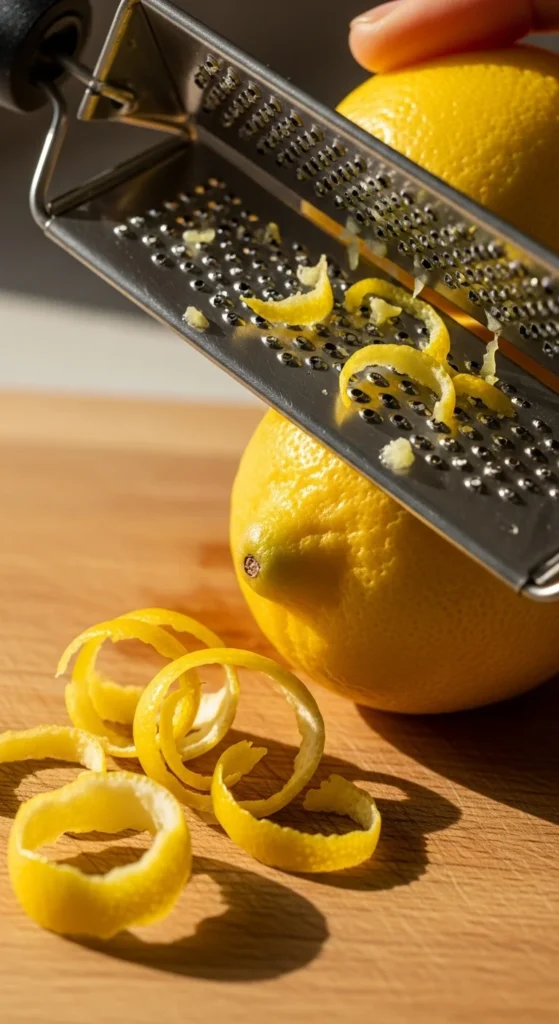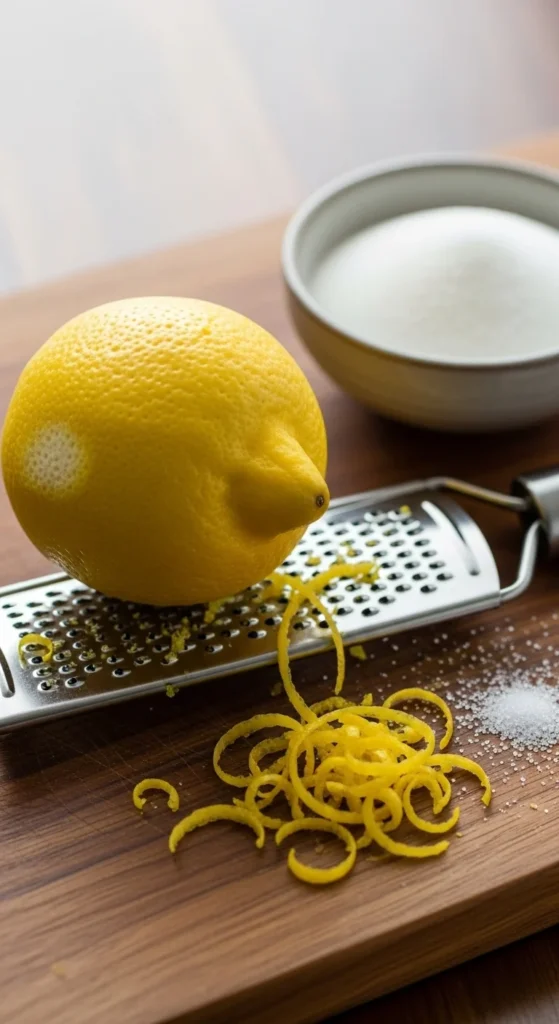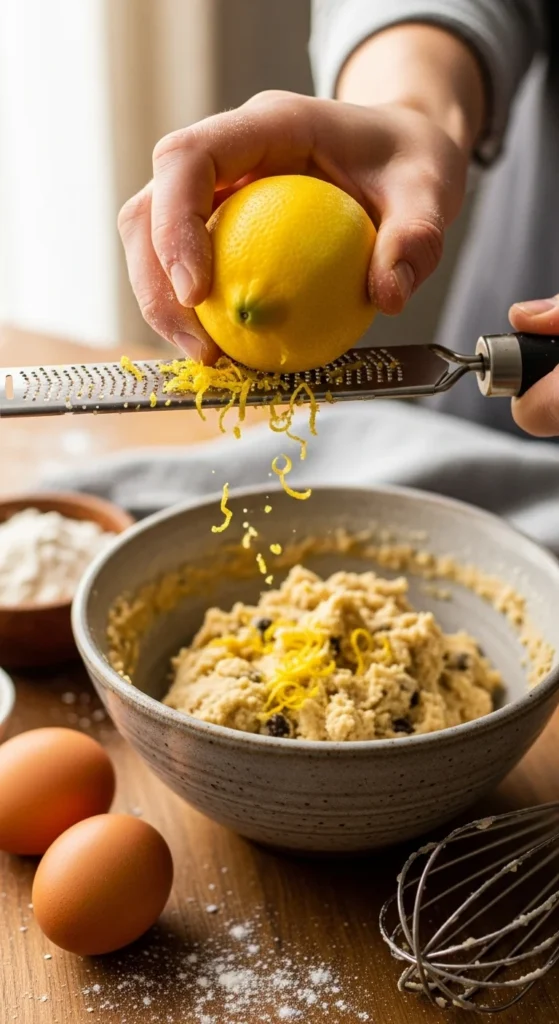There’s something magical about lemon zest—that fine, fragrant layer of sunshine just beneath the peel. It’s tiny, but it packs a punch of citrusy aroma that can completely transform your dishes, from sweet desserts to savory dinners. If you’ve ever felt like your food needs “a little something extra,” lemon zest is that secret ingredient.

What Exactly Is Lemon Zest?
Before we dive into how to use it, let’s clear up what zest actually is.
Lemon zest is the outermost yellow skin of the lemon peel. It contains the essential oils that carry all that bright, citrusy flavor—without the sourness of the juice or the bitterness of the white pith underneath.
To get perfect zest, use:
- A microplane grater for fine zest.
- A zester or vegetable peeler for larger curls or strips.
Tip: Always zest before juicing, or you’ll be wrestling with a squishy lemon.

How to Zest a Lemon Like a Pro
Zesting might seem simple, but a few small tricks make a big difference.
- Wash and dry your lemon thoroughly to remove wax or residue.
- Hold the grater at an angle and rotate the lemon, not the tool.
- Stop before you hit the white pith—it’s bitter and ruins the flavor.
- Tap the grater to release any zest clinging inside.
Store extra zest by freezing it in a small airtight container or mixing it with sugar or salt for later use.

Sweet Ways to Use Lemon Zest
Lemon zest shines in desserts where it adds a bright, floral note without overpowering sweetness. Try it in:
- Cakes and muffins: Mix zest into batter for a lively citrus aroma.
- Cookies and scones: Add a teaspoon of zest to sugar before baking.
- Frostings and glazes: Stir zest into buttercream or drizzle glaze for extra zing.
- Homemade whipped cream: Fold in zest for a subtly tangy finish.
Zest can even make a simple dessert—like vanilla ice cream or fresh fruit—taste gourmet with just a sprinkle.

Savory Dishes That Love Lemon Zest
Don’t save zest just for sweets—it’s incredible in savory recipes, too.
Here’s how to add zest for maximum impact:
- Pasta: Toss it with olive oil, garlic, and Parmesan for a quick lemon spaghetti.
- Seafood: Sprinkle over grilled fish or shrimp for a burst of freshness.
- Vegetables: Mix zest with butter to toss on roasted asparagus, carrots, or potatoes.
- Chicken and salads: Combine zest with olive oil and herbs for a light, citrusy dressing.
It’s amazing how a pinch of zest can brighten an entire dish, cutting through richness and balancing deep flavors.

Creative Ways to Use Extra Lemon Zest
If you’ve gone overboard zesting, don’t worry—there are plenty of ways to use it up!
- Lemon sugar: Mix zest with granulated sugar and store in a jar. Perfect for tea, baking, or rimming glasses.
- Lemon salt: Combine zest and flaky sea salt for seasoning seafood or popcorn.
- Citrus butter: Blend zest with softened butter and herbs for toast or grilled meats.
- Infused olive oil: Add zest to oil and let it sit for a few days for a bright, aromatic drizzle.
These easy tricks make sure none of that golden flavor goes to waste.

Final Tip: Balance Is Key
A little lemon zest goes a long way. Start small—about ½ teaspoon per serving—and adjust to taste. Its oils are powerful and can quickly take over if you add too much.
Remember: the goal isn’t to make your food taste like lemon, but to give it that lift of brightness that makes every bite feel fresh.
Takeaway
Lemon zest is one of those tiny kitchen secrets that instantly makes your cooking taste professional. Whether you’re baking muffins, searing salmon, or tossing together a salad, it adds that just-right spark of flavor.



Leave a Reply